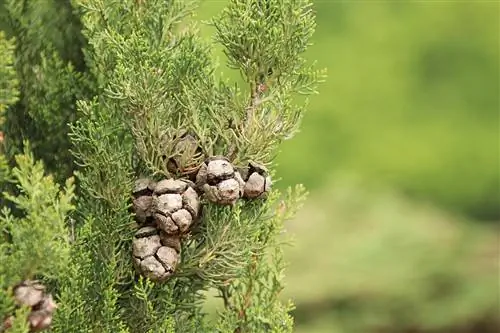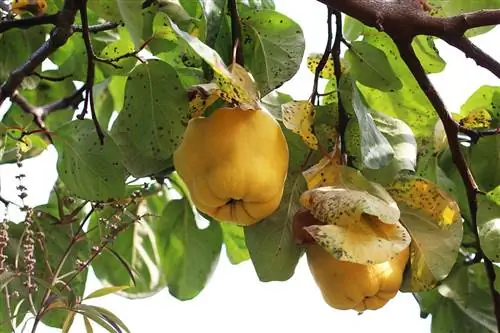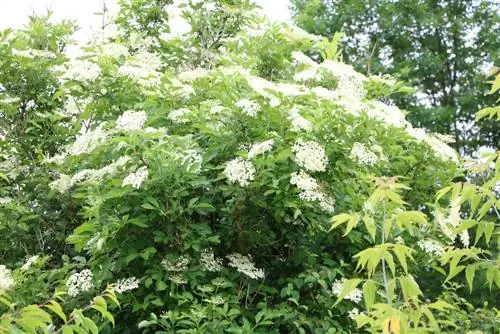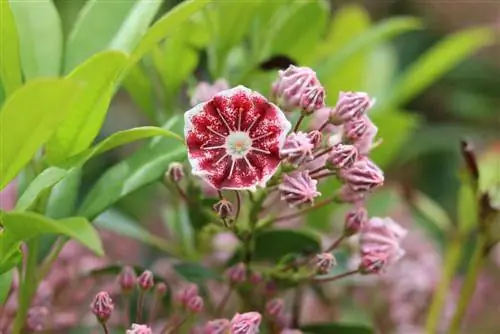- Author admin [email protected].
- Public 2023-12-17 03:39.
- Last modified 2025-01-24 12:45.
An excellent feature of cypresses is their rapid growth, which is why they are often used to quickly green up gardens and create a green garden border. At the same time, however, they have a reputation for not being easy to care for.
The home of the cypress trees
Cypresses are originally found in the warm regions of the northern hemisphere. When most people think of cypress trees, Tuscany or other regions on the Mediterranean come to mind. But the cypress is also at home in North and Central America, as well as in Africa, the Middle East, the Himalayas and China. Cypresses were already popular with the ancient Romans. As diverse as the habitats of this evergreen plant are, some species have adapted well to it. However, most species are not frost hardy. These varieties of cypress can be found in our latitudes:
- Mediterranean Cypress
- Saharan Cypress
- Arizona Cypress
- Mexican Cypress
Most of these varieties are planted to decorate gardens and parks. The Monterey cypress is also grown for its wood. Cypress trees contain essential oils that are obtained through steam distillation and used in medicine, among other things. This oil is used, for example, to disinfect and reduce fever.
Tip:
Cypress trees are plants with the longest life expectancy if they remain he althy.
Cypresses in different locations
The cypress trees brought to Europe by the Phoenicians can still be found here today as descendants. They have adapted to the locations over time and are now preferred for forming hedges. Since they are evergreen plants, they offer privacy and wind protection all year round. It grows quickly and is very modest at the same time. However, not all varieties are winter hardy, so care should be taken. The location for cypress trees should generally be:
- humus-rich and sandy soil
- sunny to partially shaded
- guarantee sufficient irrigation
If the cypress trees are in a vestibule, the water requirement is also higher than usual. They cannot tolerate drought well, even if one thinks that they can do this very well due to their location in the Mediterranean region. Basically, you have to differentiate between the variants of real cypresses and false cypresses. Mock cypresses differ from real ones in that they have flatter branches and smaller cones. These are the most popular cypress trees in home gardens:
- Yellow columnar cypress
- Arizona Cypress
- True cypress, also called weeping cypress
- Leyland Cypress
- Bastard cypress, it can grow up to 30 meters high and grows fastest
- Golden cypress, it grows up to 5 meters high and, depending on the location, the foliage changes in a yellowish or green direction
Depending on which variety the cypress belongs to, it has a growth habit typical of its variety. Some are small, round and spherical, others are narrow and tapered. The colors of the cypress trees can also be very different and range from light green to dark green to almost a blue hue.
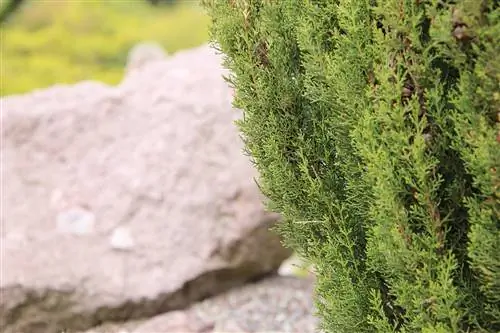
Planting cypress trees
Most gardeners want to plant cypress trees to provide a windbreak or privacy screen. The rapid growth provides additional advantages. In principle, cypresses are undemanding as long as they receive the right soil and enough water. A soil test can be done before planting. If the pH value is 5-6, it is the right soil for this evergreen plant.
The best time to plant cypress trees is spring. As soon as the frost has cleared the ground, the cypress can be planted. It can grow until autumn and then have enough strength to be able to draw water out of the earth in winter. Water is actually the most important thing these plants need, perhaps this is due to their original origins in Asia. But not only heat and sun dry out the plant, but also wind. If cypress trees need to be planted as a windbreak, the soil should be covered with a thick layer of mulch. This allows the soil to retain moisture for longer.
Care
The general care of cypress trees is not very complicated. It can also tolerate complicated locations and even grows in the middle of the city. It doesn't need forest air or peace to thrive. In addition to water, it needs the right soil, but no special nutrients. Once the cypress has developed a brown spot because the soil was too dry, it will no longer be able to recover. In this case, the cypress would have to be cut back in order to sprout again.
Cypress trees can be attacked by pests such as the bark beetle, the leaf miner or mealybugs. They should be combated immediately with biological agents or, if there is no other option, with chemical agents.
Cut
Cypresses should generally be cut back once a year. This basic pruning ensures that they do not exceed a certain height and also do not become bald inside. Dry spots can also be removed at this opportunity so that they achieve beautiful growth over time. The best time for cutting is late summer, around August to the end of September. However, cutting an imposed artificial shape from the cypress's natural shape should be avoided. The top should not be cut off either, otherwise the cypress could lose its shape and grow wildly. It's better to cut something regularly than to make a very deep cut every few years.
What you should know about cypress trees in brief
Cypress trees are evergreen, which is what makes them so popular. In addition, there are so many species, in different sizes and shapes, that some type of cypress can be found in every garden. Be careful, not all cypress trees are hardy! We usually only keep real cypresses from the Central Berry region in pots because they are not hardy or only to a limited extent and in warmer areas.
Care
- Cypresses make no demands on the soil or location. They feel most comfortable in moist, sandy, humus-rich soil.
- You should mulch the soil well so that it doesn't dry out. It's not just the sun that removes water from the ground, but also wind.
- If you plant the cypress trees in the shade, you don't need to add as much water.
- Adequate watering is important, even in winter. If there is a lack of water, damage to the plants quickly occurs.
- Cypress trees often die in winter from lack of water, rarely from the cold.
- Good soil for cypress trees should have a humus content of 40 to 60 percent, so it can store water and nutrients well.
- Heavily clayey soils are improved with coarse material, pure sandy soils with humus.
Plants
- Young cypress trees grow quite quickly if well cared for. Things slow down as you get older.
- In any case, you should leave enough space between the cypresses when planting, especially if you plant them as a hedge.
- Some cypress trees grow very bushy and require space. When buying, it's best to find out how big and, above all, how wide the plants will be.
- Planting too close will accelerate the death of branches and shoots.
Cutting
- Cypresses, especially in hedges, need a topiary every now and then. The slimmer you want the cypress trees to be, the more consistently you have to prune them.
- Pruning needs to be done at least once a year, sometimes twice. You cut once at the beginning of June and twice in April and August.
Pests and diseases
Cypress trees are often visited by softwood spider mites or the Thuja leaf miner. Fungal infestation also occurs
What are true cypress trees?
Real cypresses are usually cultivated in planters and pots. In summer they need a lot of water. The soil must be saturated to the bottom of the pot. As soon as growth begins after winter, fertilization must be carried out. Either you use complete fertilizer weekly or slow-release fertilizer once in March. Planted cypress trees enjoy the addition of ripe compost in spring and summer. It is distributed as a thin layer in the root area.

